SE Alaska’s awesome, melting glaciers

Cruise passengers get close to Marjorie Glacier. (Bill Ryan)
SOUTHEAST ALASKA’S CALVING GLACIERS are an apt symbol of nature’s response to a warming environment. Glacier Bay also holds a historic lesson about the cataclysmic consequences rapid climate change can have for human communities.
It is a rare privilege to visit the icy waters of Glacier Bay National Park. Only a few boats at a time are permitted to view the towering ice walls where glaciers come down from majestic mountains to the bay. Access is limited, especially to protect the bay’s multitudinous humpback whales.
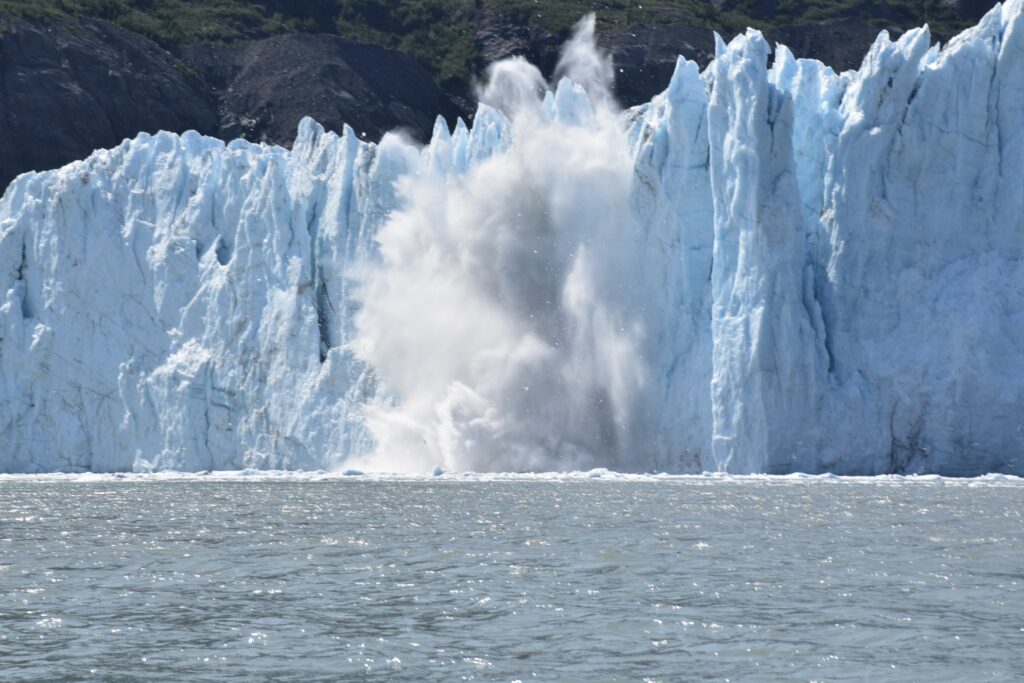
Marjorie Glacier is constantly calving (Bill Ryan)
Brother Andy had secured a precious permit, allowing us to come from Juneau and enter the park. We took Osprey up to the park’s two grandest glaciers, staying far enough away to avoid being swamped when large ice chunks splashed into the frigid water, and gently weaving our way through the ice bits floating all around. Our little boat shared one inlet with a colossal cruise ship, and the other with a busy whale and seals floating on ice.
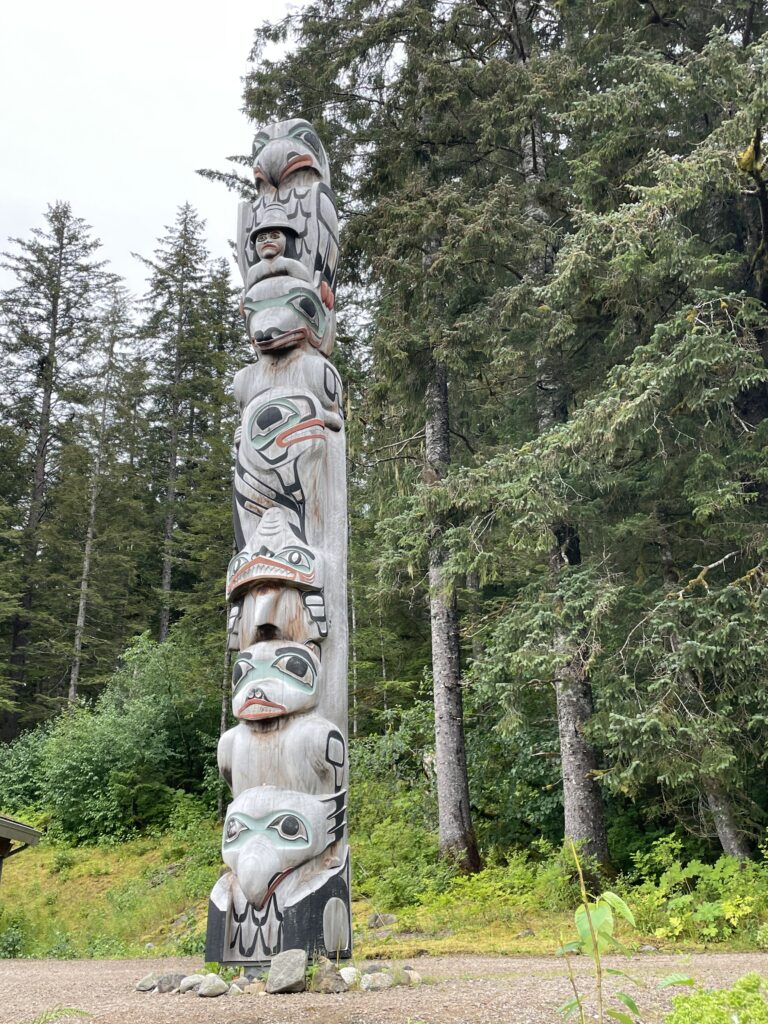
Tlingit totem at Bartlett Cove (Bill Ryan)
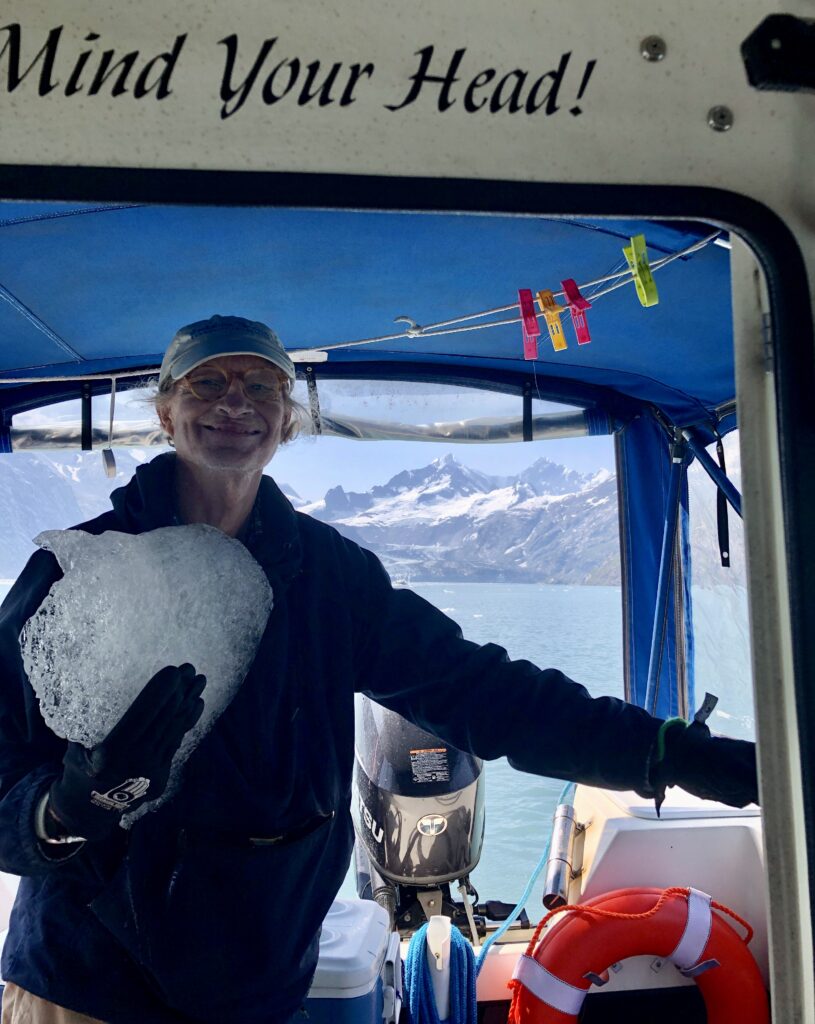
Bill Ryan catches a glacier ice chunk for the cooler
Heading south, we were suddenly surrounded by a half dozen feeding humpbacks. We spent a lazy afternoon anchored in a otherwise quiet cove as a couple of noisy whales blowed and splashed about.
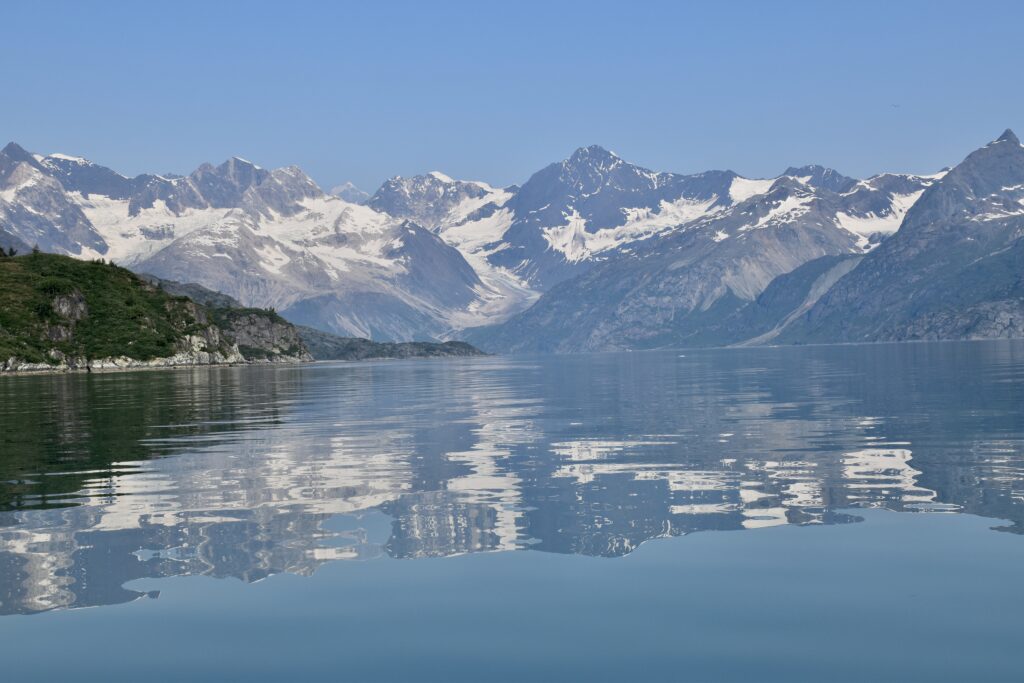
Johns Hopkins Inlet (Bill Ryan)
As night fell, an urgent radio call interrupted our reverie. A small fishing boat with an elderly crew member had run out of fuel just a few miles away. No one else was nearby. We pulled anchor and sped toward a distant spotlight to deliver the one can of gas we had onboard to the relieved fishermen.
Across Icy Strait from the park, we docked at Hoonah, a mostly Tlingit town now a stop for thousands of cruise ship passengers. Here we learned from locals about the catastrophe that befell their ancestors who dwelled around Glacier Bay until 1754. Two exceptionally cold years—possibly due to distant volcanic eruptions that darkened the sky—produced a huge, fast-moving glacier that filled the entire bay. The few people who survived were forced to flee south to a place they called Xunaa, meaning safe from the north wind. Descendants speak reverently about the homeland few ever get to visit.
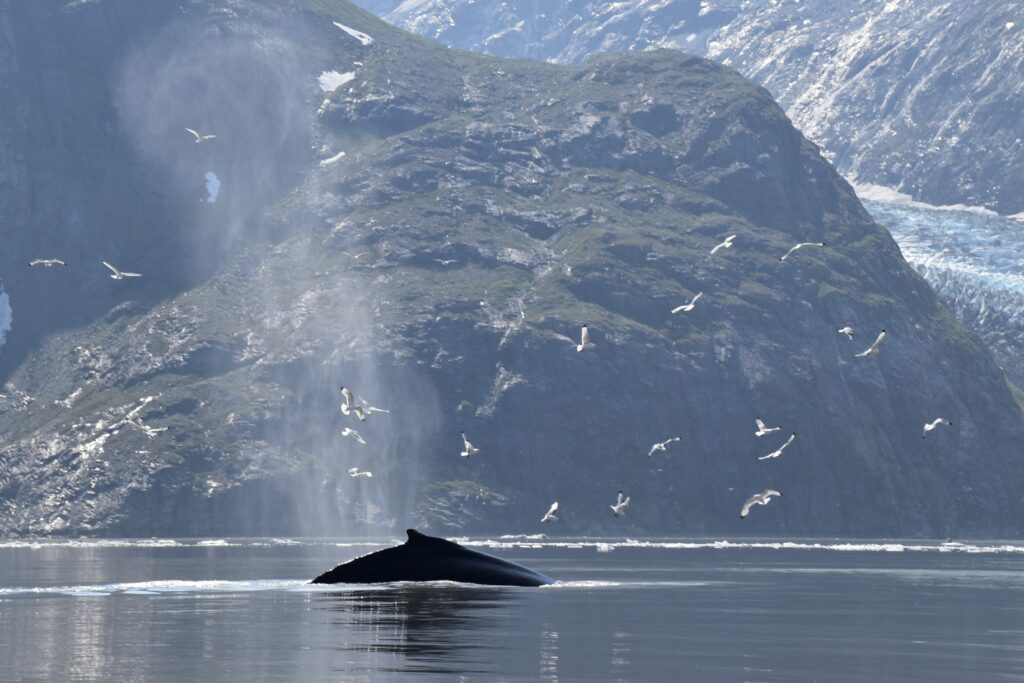
Circling gulls follow humpback’s progress (Bill Ryan)
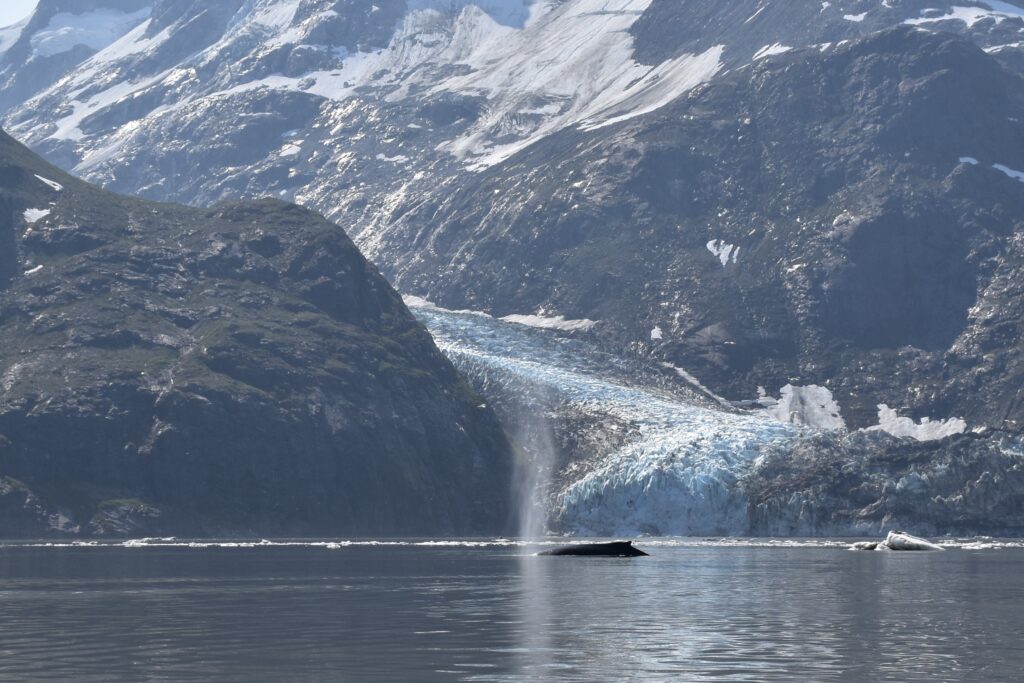
Humpback blows before Gilman Glacier (Bill Ryan)
Between stops in wilderness anchorages we visited a couple of very friendly towns. Tiny Tenakee Springs offered a mineral bath and a cafe proprietor offering cinnamon rolls and helpful local boating knowledge. In Kake, the ex-minor league ballplayer who brought us fuel drove us around, pointing out black bears feasting on salmon in a creek running through town.
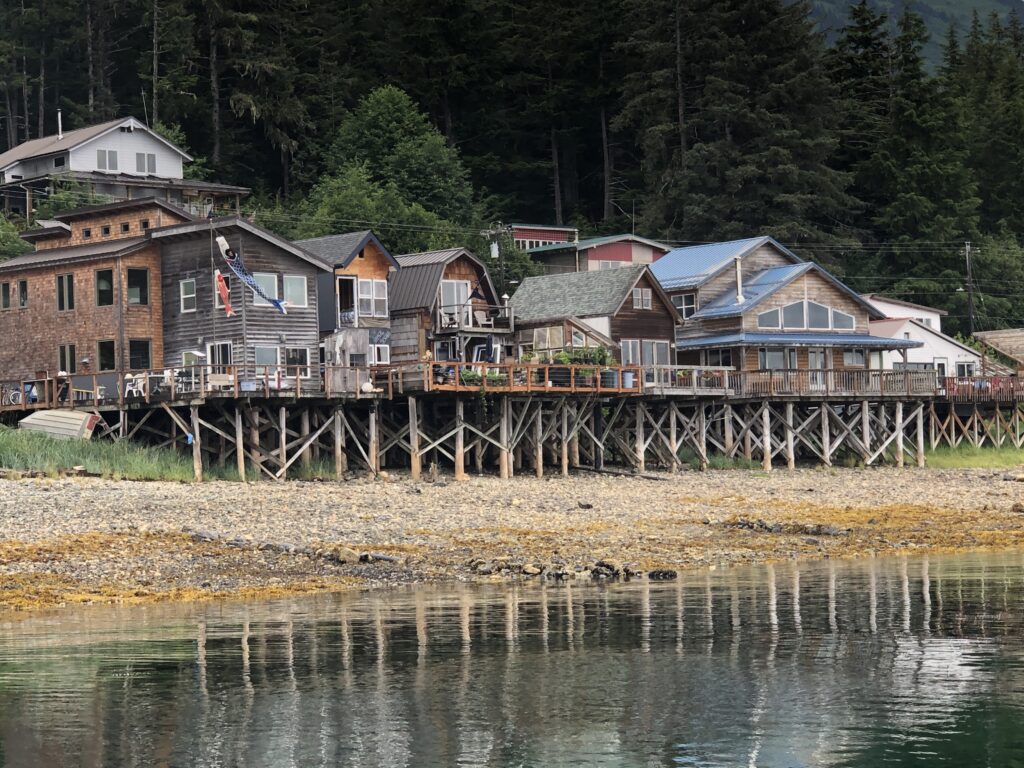
Tenakee Hot Springs
We lucked out with an unexpected string of sunny, warm days as we motored south through wild big islands. At Kuiu Island we kayaked with herons and loons. After cautiously transversing the aptly named Rocky Pass in Kuiu Strait, we spotted an orca heading down Sumner Strait.
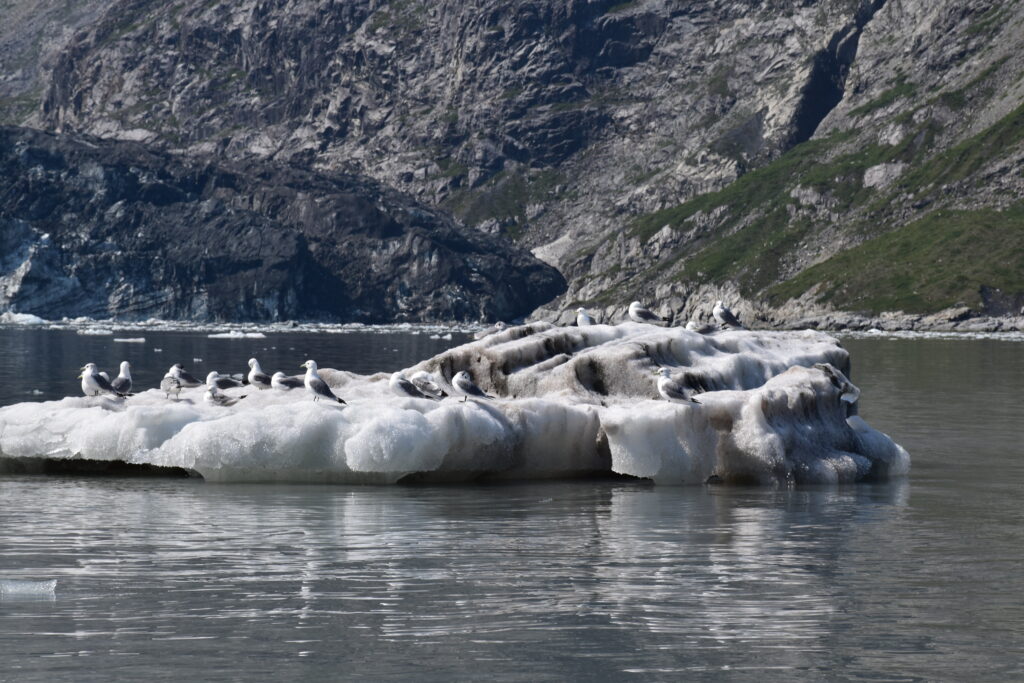
Gulls monitor traffic in John’s Hopkins Inlet (Bill Ryan)
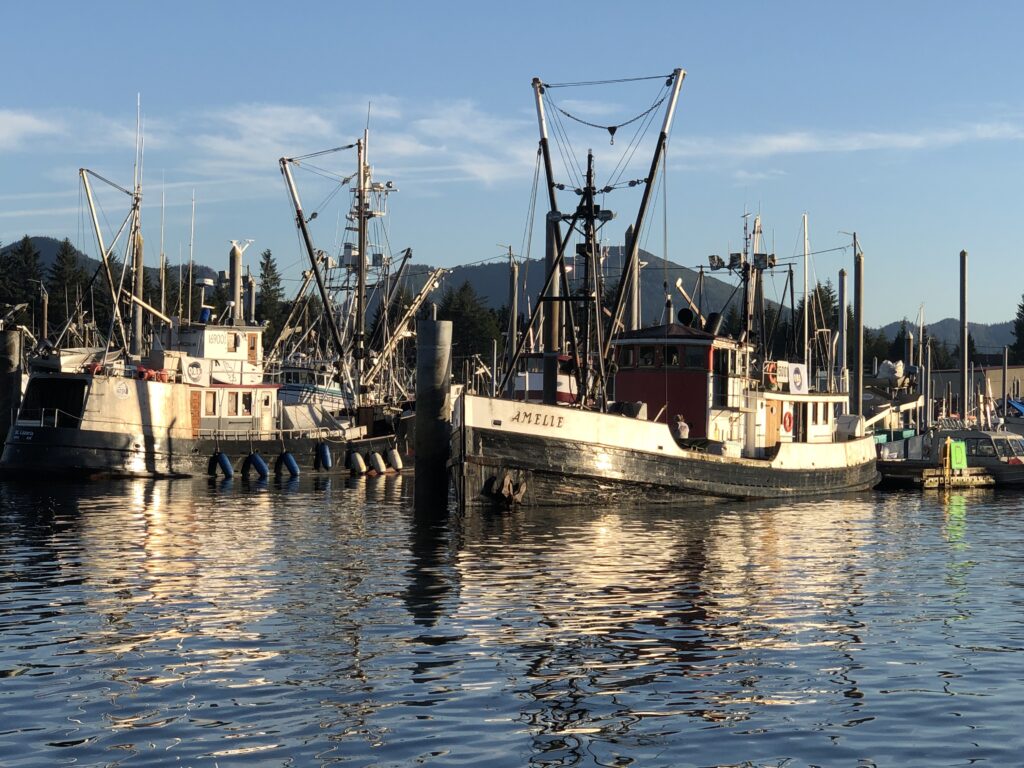
Petersburg Harbor
From Petersburg we ventured up to LeConte Glacier, the Western Hemisphere’s southern most tidewater glacier. Up close, the face cracked and boomed as pieces fell off. The giant creature-like shapes of blue ice floating outside the inlet were captivating.
Andy dropped me off in Wrangell and took on his next crew member eager to experience Alaska’s awesomeness from the water.
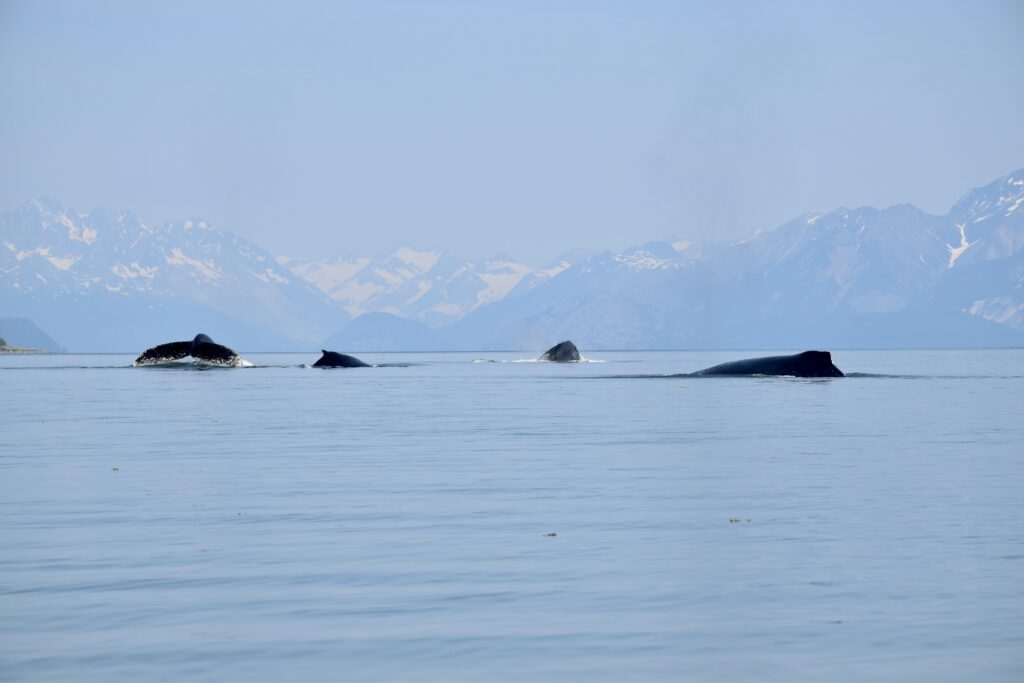
Humpback quartet in Glacier Bay. (Bill Ryan)
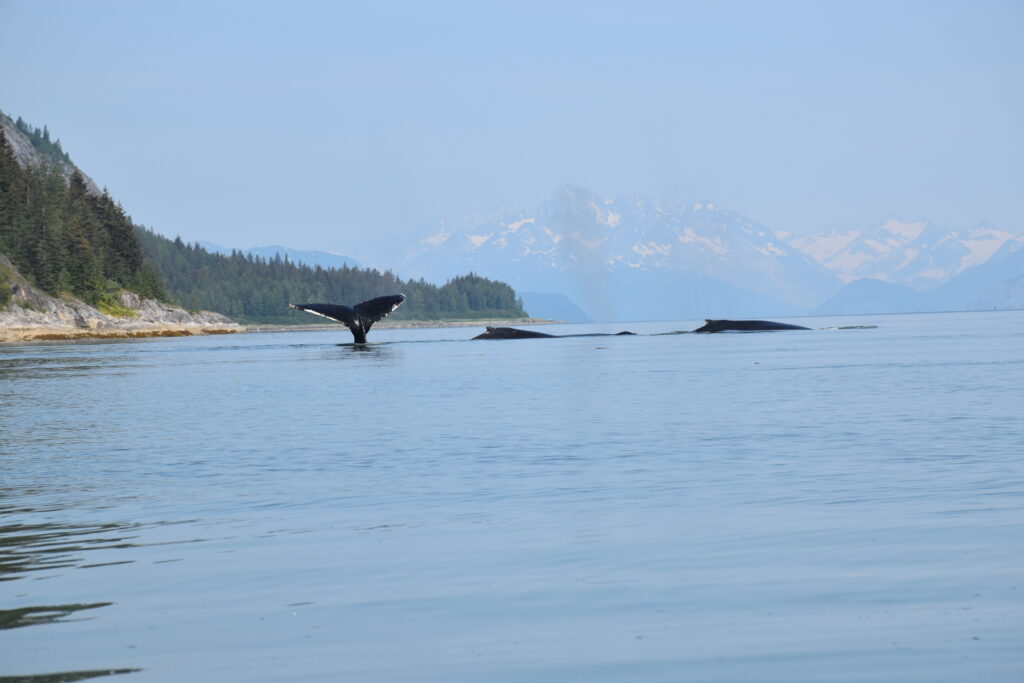
Teamwork (Bill Ryan)

Bald eagle over Tarr Inlet (Bill Ryan)
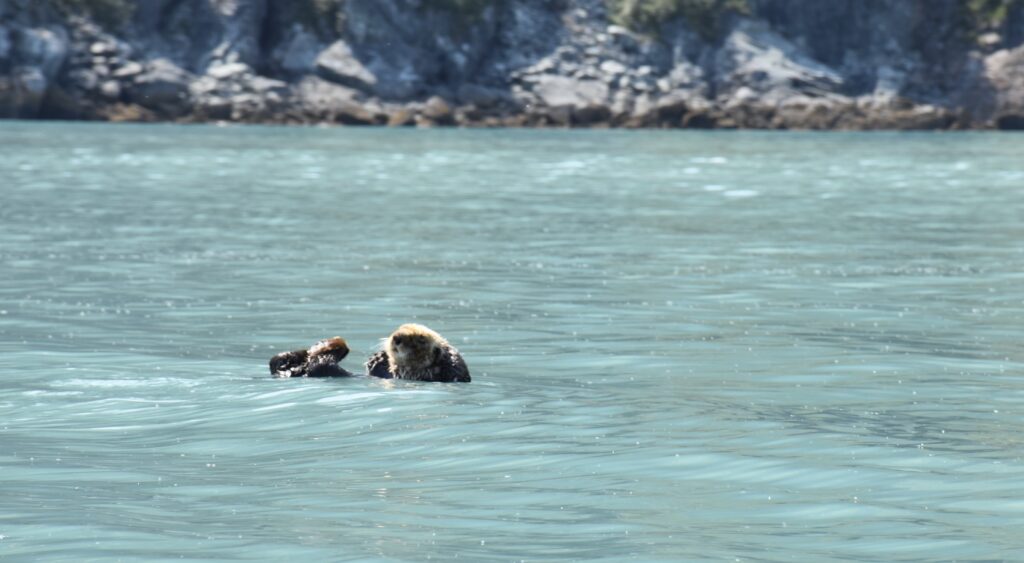
Sea otters float on their backs to eat (Bill Ryan)
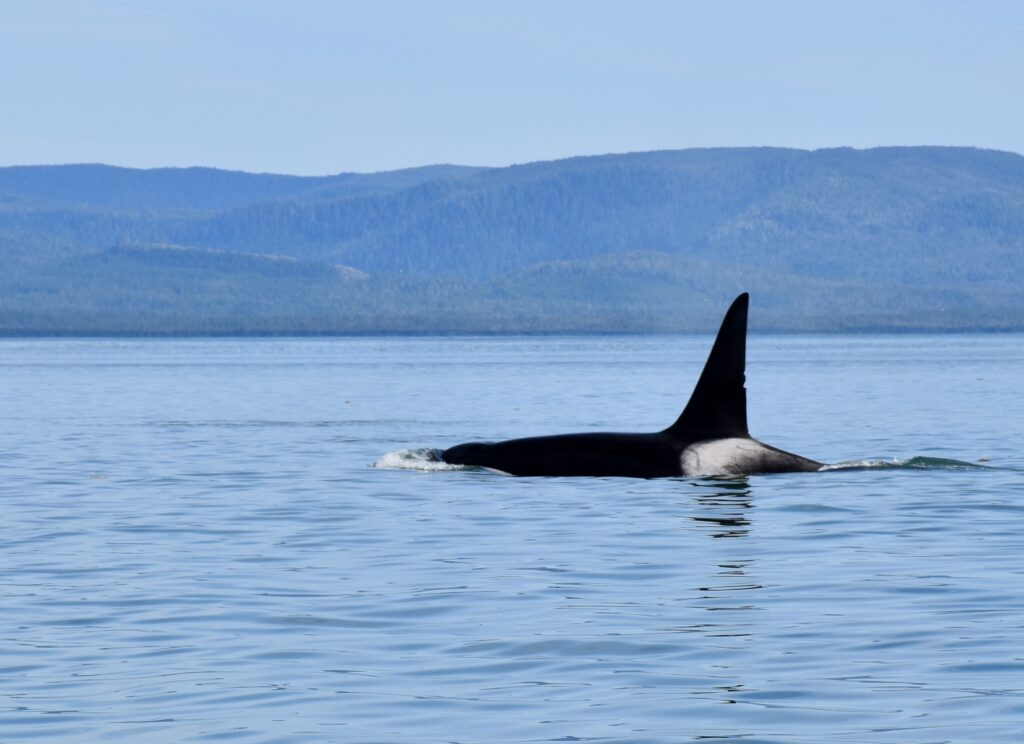
Orca swims alongside us in Sumner Strait (Bill Ryan)

Kayakers in Tarr Inlet. (Bill Ryan)
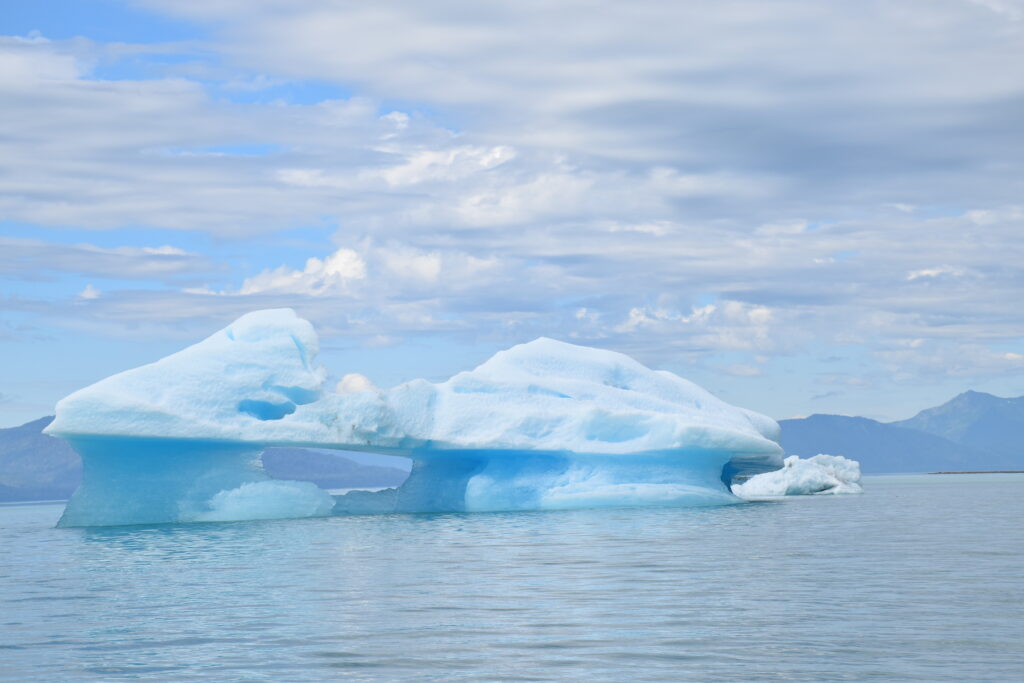
Ice creatures guard LeConte glacier (Bill Ryan)
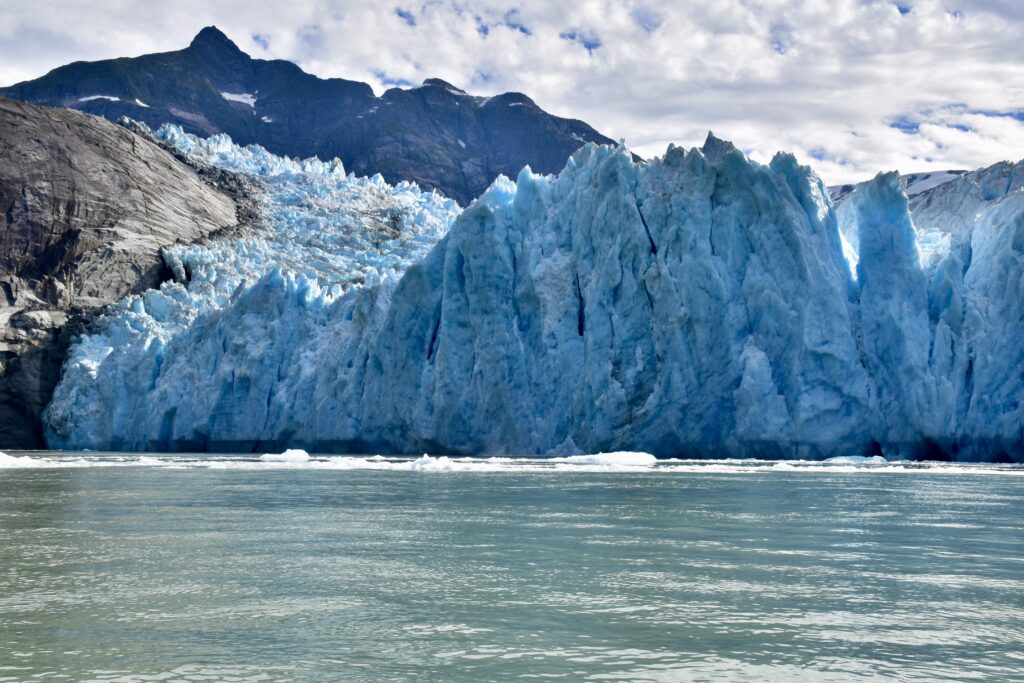
LeConte glacier (Bill Ryan)